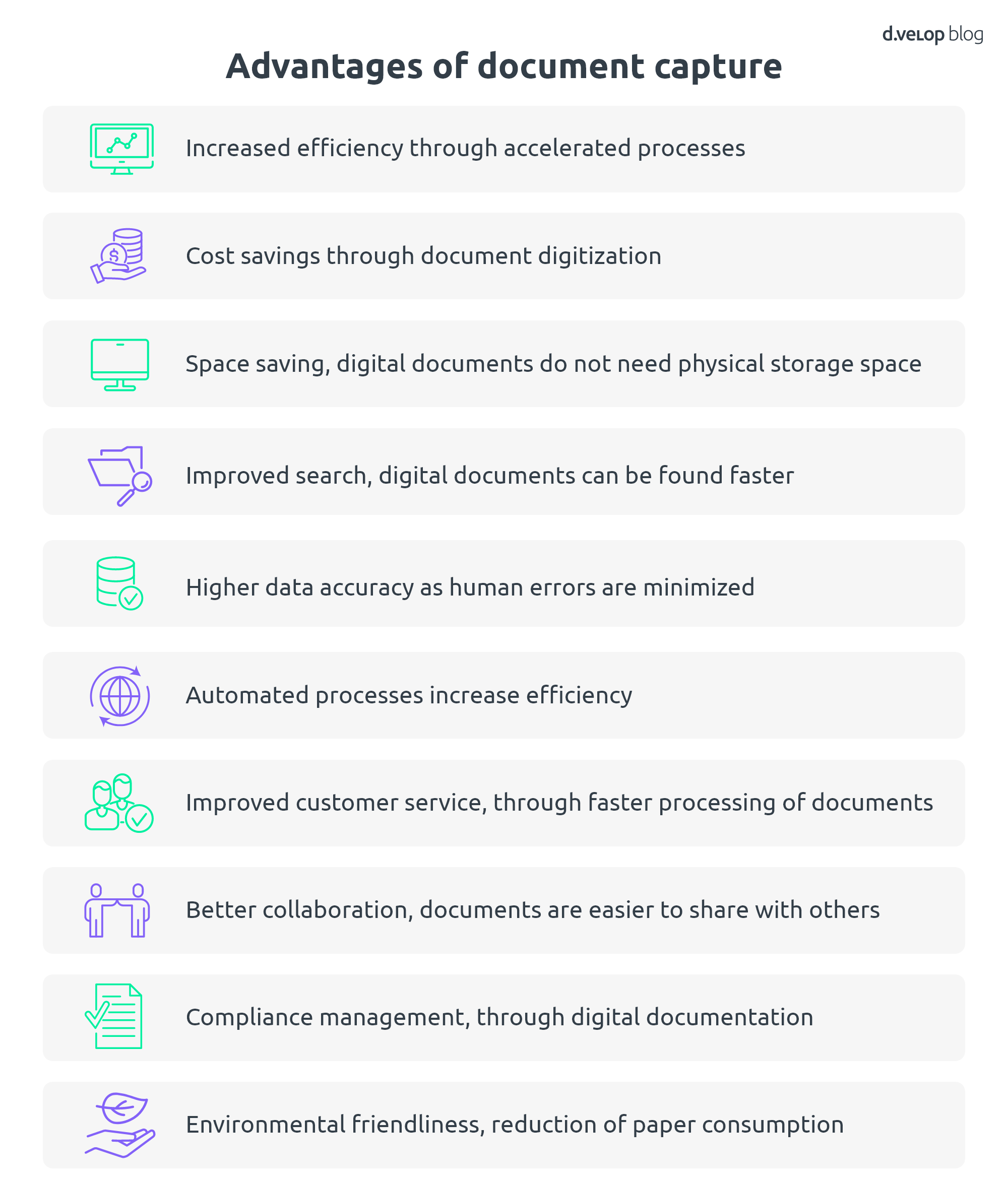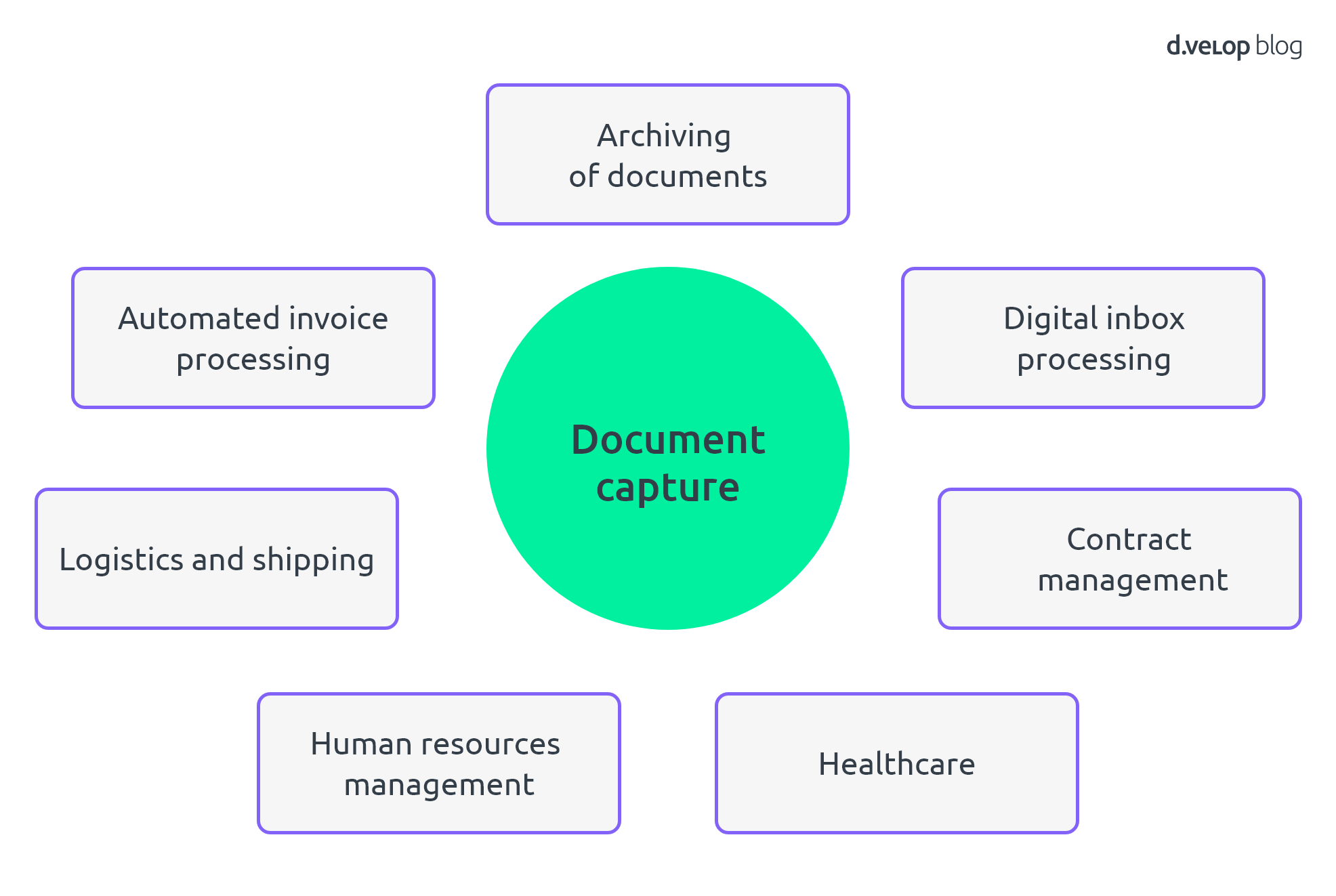Every day, countless documents are created, printed, and archived. However, in an era where the business world is becoming increasingly digital, the question arises: How can we effectively convert these documents into digital formats and use them for our business processes? This is where document capture comes into play! Digital document capture refers to the process of converting paper documents into digital formats.
What is Document capture?
Definition
Document capture is the process of digitising documents that exist in paper form or are stored in other non-digital formats. The documents are scanned and converted into a digital format that can be stored on a computer.
It is often used in the business world to extract information from paper documents such as invoices, contracts, or forms and convert them into electronic documents. By digitising documents, companies can accelerate their processes, reduce costs, and increase efficiency.
Document capture and artificial intelligence
Advanced document capture tools also utilise machine learning and artificial intelligence to automate the process and improve the accuracy of results. Document capture is also a crucial component of processes such as digital invoice processing and digital mailroom management.
Manual vs. automated
Document capture can be done manually or automatically. In manual capture, employees perform the data entry by hand. In the automated variant, software handles the capture autonomously. Document capture involves both structured data (such as name, address, phone number) and unstructured data (such as text from a report or email).
Automated document capture
Automated document capture utilises technologies like Optical Character Recognition (OCR) to extract the content of the document and convert it into a digital format. This is faster and more accurate than manual data entry, especially when processing large volumes of documents. Document capture is a vital component of document management, enabling easier and more efficient document administration. It also facilitates faster searching and access to documents as they are in a digital format and can be easily searched. Additionally, integration into other business systems such as Enterprise Resource Planning (ERP) or Customer Relationship Management (CRM) is possible to optimise processes and enhance efficiency.
Overall, automated document capture offers many benefits and can help optimise business processes and improve efficiency.
Advantages of digital document capture
Automated document capture brings numerous benefits to businesses.
- Cost savings: A significant advantage is cost reduction achieved through diminished manual processes and minimising paper and printing expenses. Another advantage is space saving, as digitising documents reduces physical storage needs, saving office space costs.
- Easy document retrieval: Another benefit of automated document capture is easy and quick document searching and retrieval, saving time and effort. Automated document capture also leads to higher data accuracy, as human errors in manual data entry are minimized.
- Automated workflows: Advanced document capture tools can also automate workflows and eliminate manual tasks. This allows companies to save time and resources, focusing on more important tasks. Swift and accurate document processing also enhances customer service by enabling quicker response to customer inquiries.
- Cross-location collaboration: The ability to easily and quickly share documents with others can enhance internal collaboration within a company.
- Minimised compliance risks: Digital documentation can help companies comply with legal requirements and minimise compliance risks, which is especially important in regulated industries.
- Reduced environmental impact: Lastly, environmental friendliness is an important aspect, as reducing paper consumption and waste can lower environmental impact.

7 application areas of document capture
Document capture can be applied in various areas:

1. Document archiving:
Document capture can help companies digitise and archive documents, improving management, storage, and retrievability.
2. Automated invoice processing:
Through automated invoice processing, companies can eliminate manual tasks in the invoicing process, increase efficiency, and reduce errors.
3. Digital mailroom processing:
Digital mailroom processing can capture incoming emails, faxes, and other digital documents, integrating them automatically into existing systems. Physical mail items like packages or letters can also be delivered directly to the correct recipient within the company.
4. Contract management:
Digitising and automating contracts can help companies optimise their contract management process and increase efficiency.
5. Human resources management:
Document capture can also be useful in HR management to digitally capture and manage applications, employment contracts, certificates, and other documents.
6. Healthcare:
In healthcare, document capture can digitise and manage patient records and medical documents, increasing data accuracy and efficiency.
7. Logistics and shipping:
Document capture can be used in logistics and shipping to digitally capture and manage freight documents, delivery notes, and other related documents.
All in all, document capture can be employed in many different application areas to optimise business processes, save time and costs, and enhance data accuracy.
Taking document capture to the next level
During meetings, many people make quick notes to remember relevant conversation details. Quick notes, drafts, or annotations on a document are often done manually rather than digitally. However, for further work or sharing, digital text is more convenient. That’s where OCR technology comes in again, to convert document content into editable, searchable text.
An outlook on the future of document capture
The future of document capture will likely be shaped by further advances in digitisation and automation. Here are some trends and developments that could be relevant in the future:
- Artificial intelligence (AI): AI-based technologies can enhance document capture systems by supporting automatic document classification, data extraction, and automated data entry.
- Robotic process automation (RPA): RPA can further drive the automation of document capture processes by automating tasks such as data extraction from documents or automatically integrating documents into other systems.
- Cloud-based solutions: Cloud-based document capture solutions can help companies securely and efficiently store and share documents without the need for complex IT infrastructures.
- Mobile capture: Capturing documents through mobile devices like smartphones and tablets is becoming increasingly important, allowing document capture on the go or from remote locations.
- Blockchain: Blockchain-based document capture can enhance document security and confidentiality by providing a secure, decentralized database that cannot be tampered with.
- Integration of speech recognition: By integrating speech recognition technology, companies can capture documents through voice input and automatically convert them into text.
Overall, the future of document capture will be influenced by further automation and digitisation.
Digital document management explained
Templates, best practices, tips and tricks for a digital document management system
